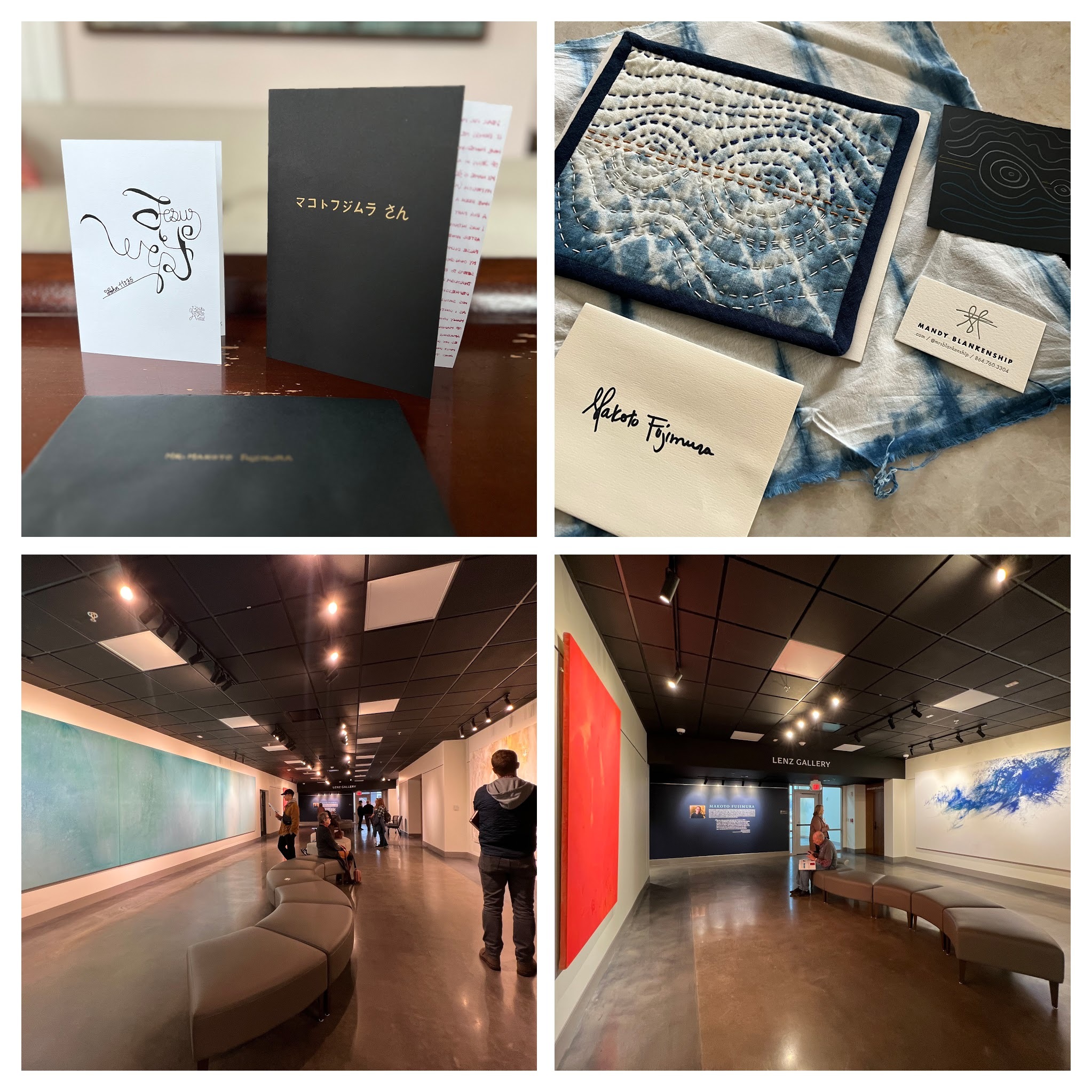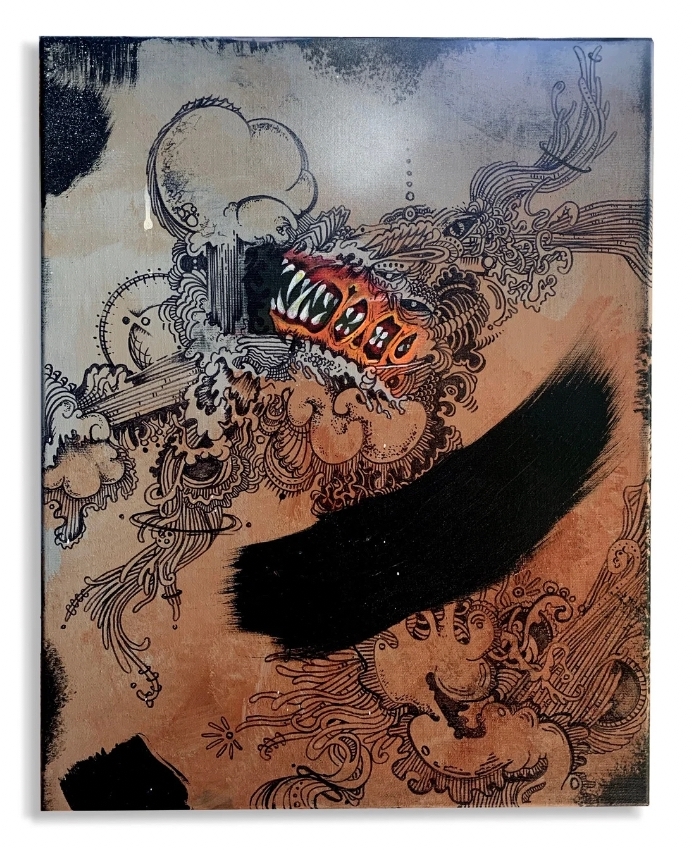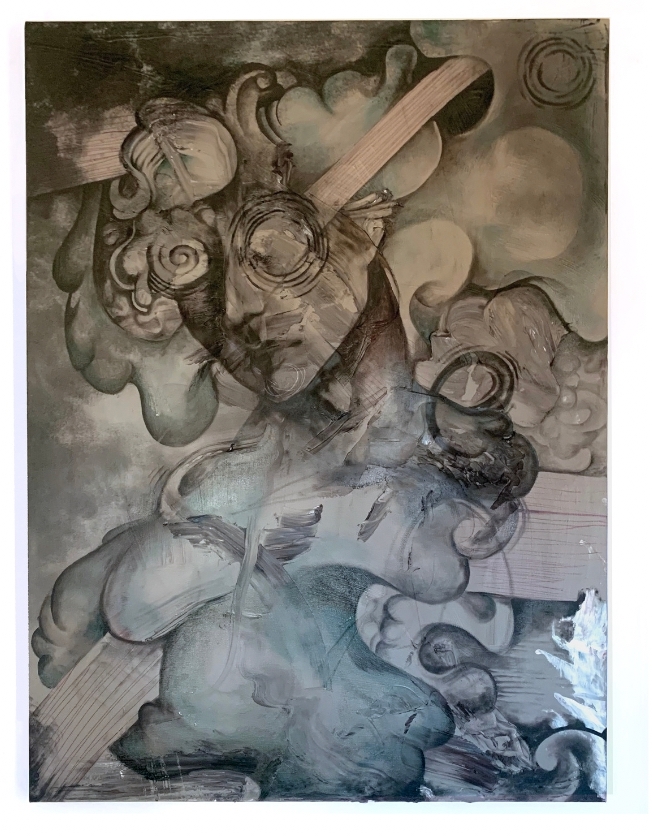Contributors: Makoto Fujimura, Jared Stacy & Bianca Valencia Criscuolo
Heading image: The Muses: First Love, Oil and Acrylic on Canvas, 40“x30”. Copyright © 2021 Bianca Valencia Criscuolo.
A Note from IAMCultureCare
A few weeks ago I had the privilege of attending a beautiful concert by my former university choir, which was touring parts of the east coast during their spring break. It’s always a slightly odd feeling to be an onlooker for the first time into what was once a highly significant part of one’s identity, to no longer be a participant but instead a receiver. This can happen with a musical group, sports team, dance troupe, theatrical company, or any body where the whole is more than the sum of its individual parts. To be on the other side of the stage is merely to take on a different role in the generative interplay of art, artist, audience. It’s a performative dialogue without which art in some sense can’t exist.
Culture Care seeks to amplify these generative moments and respond, ultimately, with hope. At least, that’s what theologian Jared Stacy urges us to do, in his final installment in an Ethos of Culture Care essay series. That generativity is also echoed in IAMCultureCare founder Makoto Fujimura’s brief note reflecting on his recent speaking engagement in Greenville, SC. Finally, our art feature this month explores that mysterious interplay between art, dreams, and reality, with a preview of Connecticut-based artist (and Embers International Artist Advocate) Bianca Valencia Criscuolo’s upcoming solo show. Bianca’s art also features as the newsletter heading image for this month.
Thanks to those who have been in touch with us to submit ideas and content for consideration in the newsletter. Please keep those coming by replying to this email for more information or filling out this Google form.
Yours,
Jacob Beaird, Editor
A Note from Makoto Fujimura, founder of IAMCultureCare
Dear Culture Care Communities,
After I finished speaking at the “Mystery of Beauty” conference on March 1 that accompanied my solo exhibit there at the Galleries at First Pres in Greenville, there were folks lined up to speak to me. It’s always a delight to get to know folks I’ve not met to speak about my art and my books, and greet old friends.
What I did not anticipate was almost every person had a story to share or a gift for me. Many of them were substantial gifts of what they made (sometimes taking years) in response to my books or my art. Many of the stories that spoke of personal transformation and growth brought tears to my eyes.
There is nothing more gratifying than people viewing my works and responding. There is no greater honor for me as an artist that to have my making lead to generative lives and generative making.
Thank you to all who sojourn to create into the New with me.
#CultureCare soil is being prepared for the next generation in South Carolina.

Photos by Makoto Fujimura, 2024, originally posted to X on March 2, 2024.
Essay Feature: Ethos of Culture Care (Hope)
By Jared Stacy
This month we conclude a series on an ethic of culture care. The first installment suggested the importance of time, particularly kairos time to an ethic of culture care. Kairos is a time of opportunity, of fullness, of possibility. And it is a time that bursts onto the scene of the world in Jesus, who announced his ministry with these words: “Repent, for the time (kairos) is fulfilled, the kingdom of heaven is near.” To live and move in an ethos of culture care is to live by this kairic standard of time, to seize a present pregnant with meaning and possibility. This is in contrast to chronos time and its the endless succession of years or seconds (with their logics seeking to mitigate risk and capitalize ROI).
But what fills this time? What is born in this kairic moment? In our second installment, we suggested that the material of an ethos of culture care is not something we create ourselves. While the ethos of culture war is militancy, an ethos of culture care cultivates a posture of receptivity to God’s grace. This grace can be sometimes abstracted. It can come to mean little more than pious sentimentality, a “bless your heart” sort of indifference. This is what Dietrich Bonhoeffer called “cheap grace.” But then there is costly grace, a grace that touches the grit of life and is the “building material” of a culture care ethos, the building material for new creation, and this is something we receive as reconciled creatures to our Creator. This culture care receptivity to grace both renews and direct our material contributions towards healthy human culture, from aesthetic beauty to the pursuit of justice.
Time. Material. And Hope. An ethos of culture care that seizes the now of kairic time to cultivate receptivity to God’s grace both invites and gives witness to hope in the midst of despair. Yet this hope is also risk. Because to cling to hope is one thing, but to boldly invite others into such hope is to risk scorn, as this is a subversive, courageous hope that resists the prevailing status quo and its many false necessities that come to us as “culture war.” Let me explain.
In Jeremiah 32, God’s prophet was imprisoned in Jerusalem for prophesying against the regime of King Zedekiah; the word from God on the lips of Jeremiah warned against a military alliance with Babylon and predicted the defeat and captivity of the Jewish people. Now, from the court of the guard, Jeremiah witnessed the fulfillment of this prophecy: Jerusalem under siege from the imperial forces of Babylon. King Zedekiah, knowing he was about to become a political prisoner, came to his own political prisoner with an honest question, “why did you say these things?” And Jeremiah’s response, in the midst of despair, reveals the way hope features in an ethos of culture care.
Jeremiah revealed to the King that, as the siege began, he had been approached by a relative demanding Jeremiah fulfill his legal obligation by purchasing a piece of land. The time was telling. Obviously, Judah’s real estate market in the midst of a foreign invasion was not a good investment. But God commanded Jeremiah to abide by his legal duty with the transaction. He bought a field soon to be ruled by a foreign power. And this act was one of hope in the future God had promised.
This field was Jeremiah’s answer to the King’s hopeless question. The future was not in captivity, but reconciliation. His purchase of the field was a concrete act, a witness to hope that dared to see the land occupied by the enemy as the site of God’s future.
An ethos of culture care attunes us to God’s kairic time, cultivates a renewed receptivity to grace, and witnesses to concrete acts of courageous hope — buying a field in an invasion, works of art that provoke hope amidst despair, acts of justice that resist fate. These are the acts born of an ethos that directs us to glimpse God’s future coming towards a world that has already been reconciled. It just doesn’t know it yet. And this is what an ethos of culture care reveals.
Jared Stacy is an American ethicist and theologian residing at the University of Aberdeen in Scotland as a PhD candidate. His research focuses on political extremisms and political theology. You can find him on platforms like Substack, Instagram, and X.
Art Feature: Bianca Valencia Criscuolo

Origins: Behemoth, Acrylic, oils, pen/ink on canvas over hand-made wood frame, 16″ x 20″. Copyright © 2020 Bianca Valencia Criscuolo.

Dreams: Peter, Cold-pressed Giclee print. Copyright © 2019 Bianca Valancia Criscuolo.
Bianca Valencia is a Connecticut-born artist specializing in fine art and illustration. Her illustration work leans towards surrealism and abstract expressionism with a highly concentrated exploration of dreams, theology, and the ontology of the self. Bianca’s paintings respond to the aesthetic energy of abstract expressionism with active movement towards work in which the gesture of the artist’s hand or process is highly evident in the final compositions, as the work seeks to explore theological cosmology and the act of making.
Bianca’s solo show “Beyond the Veil: Exploring the Tensions Between” opens on April 5th, 5 – 9 pm at the Wilder Gallery at The Knowlton in Bridgeport, CT: “It’s perhaps most interesting, the possibilities that exist in the space between things. In that suspended place of tension is the beginning of “newness” , the birth of novel thought and perhaps a kind of resilient peace given form by hope and curious calling to explore.”
Culture Care Events
- “My Bright Abyss: Paintings & Prints” Makoto Fujimura Exhibit at Bradford Gallery — Nashville, TN, Now — March 31. The exhibit is open on Sunday mornings and for special events, as well as group tours. Contact the St. George’s Episcopal Church office to find out how to visit.
- “Mysterion” Makoto Fujimura Exhibit at The Galleries at First Pres — Greenville, SC, Now — July 25. Mini-retrospective of Makoto Fujimura’s works.
- “Water Flames” Makoto Fujimura Exhibit at Pepperdine University’s Frederick R. Weisman Museum of Art — Malibu, CA, Now — March 31. This exhibit brings together a number of Fujimura’s major paintings of the last 20 years, focusing on the poetic paradox between the elements of water and fire, which symbolize, in Fujimura’s words, art’s power to “[turn] the flames of destruction into the flames of sanctification.”
- The Overseas Ministries Study Center at Princeton Theological Seminary is accepting applications for their 2024 – 2025 Artist in Residence Program. Check out the OMSC site for more information.
- Tuesdays with Morrie — Seadog Theater, NYC, March 1 – 31. This limited run production of a poignant (& culture care) story has a number of IAMCC connections, including Board Member Bruce Shaw’s daughter Sally Shaw, who is company manager at Seadog and is featured as a vocalist. Newsletter readers who attended IAMCC Partner Embers International’s 2022 Virtual Gala may remember Sally’s beautiful musical performance during that event.
Do you have a news item or upcoming culture care event? Consider sharing it with us for a possible feature here in the newsletter! Email jacob@internationalartsmovement.org.
Web Links
- How Armenian monuments heroicize artistic resistance, in The Hedgehog Review.
- Interview with philosopher James K.A. Smith on mystery, in Mockingbird.
- Cory Henry (arguably the best jazz/gospel organist alive) just released a new album as an homage to his childhood playing organ in church.
All content in this newsletter belongs to the respective creators, as noted, and is used with permission.
